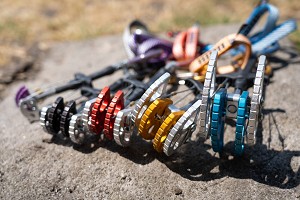
It used to be pretty simple. No one spoke about 'cams', they were all simply called 'Friends' just like personal stereos were all 'Walkmans'. This was true even if you were one of the minority whose Friends were actually Quadcams and made by HB not Wild Country. We had heard of these mystical devices from across the great western ocean, with their mythic name and magical powers to expand much wider than our pedestrians friends, whether rigid or flexi. But they were for the rich or the hardcore, whose racks were a statement: "I've been to Yosemite and you haven't."
Times changed and the market diversified. Perhaps it was the pound going up against the dollar, or costs going up for UK manufacturers, but Camalots became more and more seen in the UK, and Wild Country got further competition from DMM and from other climbing manufacturers in both Europe and the US all making 'Spring Loaded Camming Devices' (SLCDs). Nowadays my climbing partners are as likely to tell me that I need a 'yellow Camalot' for the crux as they are a 'Friend 3'.
Black Diamond's Camalots were revolutionary when they first came out as they were the first camming units to use a double axle. The double axle design means that each unit can cover a wider range of sizes, meaning the cam you grab hurriedly off your harness is more likely to fit the placement. It also gave them passive strength, although this advantage has been lost as the manufacturers of single axle units, starting with the ever innovative HB, began adding cam stops. The original Camalots had the U-style double stems, like DMM 4CUs do now, but Black Diamond had become convinced of the advantages of a single flexible stem by the second generation of Camalots. The current, third, generation of Camalots – known as C4s – weigh less than their predecessors and have a thumb loop instead of a thumb stop.
...Black Diamond's Camalots were revolutionary...
While BD had the patent on the double axle design, rival cam makers generally focused on the greater weight of Camalots in comparison to their own single axle units. In response BD said that with Camalots you needed fewer units to cover the same possible size of cracks. This might be seen as a fair point if you mainly climb on, for example, gritstone but an early 2000s Wild Country catalogue put the counter argument: if you are climbing a 40m pitch, having fewer units is no longer an advantage. Their argument was that 8 Technical Friends weighed about the same as 6 Camalots, so for the same weight you might as well have the two extra runners! This always seemed to me a good point – perhaps brought home by some epic personal battles on the 45m high main wall of Olhava in Finland, where I have arrived at the top with little left on my harness besides a nut key and belay device – everything else having been placed to help control the terror somewhere below.
So onto the DMM Dragons versus the BD Camalots...
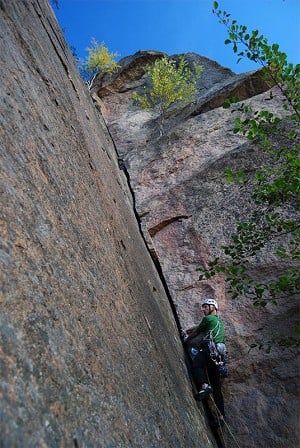
When DMM started making the 4CUs and Metolius their similar ultralight four-cam units, the weight advantage over the Camalots seemed even more stark. Nevertheless, there clearly is a real advantage to the double axle design. Coming from many, many years of using single axle cams, I really do notice that I'm far more likely to get the right size with either the Dragons or Camalots first time, because of the noticeably bigger size range each cam covers. So it made sense that once BD's patent lapsed another manufacturer would offer a two axle unit similar to the Camalot.
With the Dragons, DMM have clearly tried to take the best parts of the Camalot design and then improve on it. As the weight of Camalots has historically been seen as one of their few detracting features, making the Dragons lighter was clearly important. DMM has managed this to some extent, but BD have also put much effort into lowering the weight of C4s over the previous Camalot generations.
Some Dragons are quite a few grams lighter than the equivalent size Camalot. Others are very similar weights. Using the manufacturers own weights I make the difference to be only 43g between a rack of six same sized units, the equivalent of just one mid-sized krab. C4s feel chunkier and you expect them to be heavier, but it is only a small difference according to the figures. However, it must be taken into consideration that the extendable slings on the Dragons may well mean climbers need to carry less quickdraws with them for avoiding rope drag on the their cams.
...DMM have clearly tried to take the best parts of the Camalot design and then improve on it...
When you put the C4s and Dragons head to head, the greater width of the Camalots is very apparent. The Dragons being slimmer would clearly help make them lighter. My understanding is that friction between the rock and cams is not central to the holding power of cams, therefore the slimmer cams of the Dragons should not be a disadvantage in most placements but perhaps if you climb a lot on softer sandstone, then the greater friction and less pressure exerted by the wider Camalots cams might be desirable, at least psychologically.
My few falls onto the two different units so far are, of course, a tiny sample size so only time and thousands of climbers taking lobs onto them placed in different rock types will really tell. I hope the many excellent climbing engineers of UKC will weigh on once again on the friction and holding power issue in the thread below this review!
A note should be made of the differing lengths of the Dragons and Camalots – and here it is important to understand that unit length, sling length and total length are all slightly different issues. Not including the slings, C4s are noticeably longer than Dragons due to having the thumb loop design. This makes them marginally easier to place or remove in deep cracks, although only marginally because the trigger is in the same position on both units and obviously you need to get your finger round that. Nevertheless, on the C4s, being able to put your thumb either through the loop, or at the base of it, gives slightly more options for cleaning.
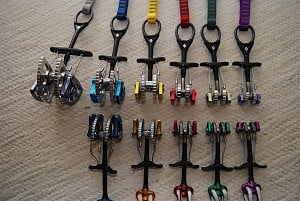
The difference between the slings and thumb pieces between the two models is inter-related. DMM, in wanting to use their new super-strong skinny dyneema to make extendable double slings, found they couldn't use a thumb loop design because it would deform and kink when loaded. Their solution was the machined aluminium thumb stop with two holes. BD had found the same problem, even using wider nylon tape. Their solution was to use a double thickness 'sewn-in' sling design. The double thickness of the nylon provides enough thickness on the thumb loop to spread the pressure of the load and stop the wire from kinking. It is interesting to note that in the BD instructions it states that clipping a karabiner directly into the thumb loop can reduce the overall rated strength by 2kN, whereas every size of Dragon is 14kN in every attachment and configuration.
The slings on neither model are really DIY replaceable. I checked with both manufacturers on costs of re-slinging them: DMM will charge £10 for the first unit and £7.50 for each subsequent one added. This includes VAT and return postage. BD do not currently have a facility in Europe for re-slinging Camalots but informed me that because they understand the hassle of this for UK customers, they will re-sling and return Camalots for UK customers for free (US climbers have to pay for each re-sling)
Us Brits will just have to cover cost of shipping our Camalots safely back to the US when we feel it is time to have them re-slung. BD's advice is that we should expect the sling to last 2-5 years for regular users and 5-8 years for less regular climbers, so with either model it is something most climbers won't be worrying about for some time.
So, in the end, which are best?
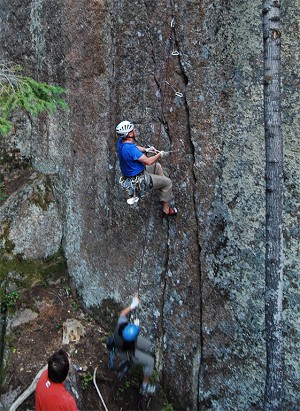
...If forced to climb down off the fence, if you climb a lot in the Lakes, Welsh or Scottish mountains, you might favour the Dragons...
I've gone backwards and forwards on this – and still don't have my own definitive position, really both type are great and I don't think you could go wrong with either model. If really forced to climb down off the fence, I might say that if you climb a lot in the Lakes, Welsh or Scottish mountains you might favour the Dragons. Their double slings will help fight the rope drag and could you pack a few less quickdraws on those long walk-ins. If you are a crack addict, be that holidays in Indian Creek or weekly ticks of Brown and Whillans routes on grit, you might appreciate the pure crack functionality and chunky feeling of strength of the C4s. Their short slings are no problem on straight up routes, but you might want to add a quickdraw if your route wanders.
Both the C4s and Dragons are lovely pieces of equipment and most people will probably decide on which they can find at the best price, or which they find more aesthetically pleasing! With them so evenly matched the next interesting question will be whether the promised weight saving of the soon to be released Wild Country Helium Friends will tempt climbers back to the single axle design from either of these superbly made camming units.
Prices and more info
DMM Dragons: Size 1 and 2: £53; 3 - 5: £55; and size 6: £60.
More info about the Dragon Cams on the DMM website.
BD Camalots: Size 0.3 - 0.5 £52.99; 0.75 - 2: £54.99; 3: £59.99;
4: £74.99; 5: £84.99; 6: £99.99.
More about the Camalots on the Black Diamond website.
About Toby Archer
Toby Archer is based in Finland, where he works as a researcher specialising in terrorism and political Islam.
He describes himself as an "international politics think-tanker, perennial PhD student, hopeless but enthusiastic climber, part-time gear reviewer, often angry cyclist, idealist, cynic."
Climbing keeps him from getting too depressed about politics. He blogs about both at:
Light from the North - chilled thoughts from the top of Europe.

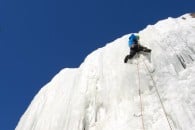

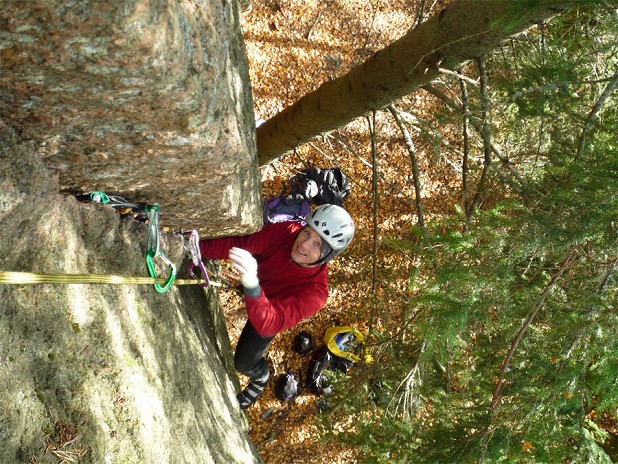
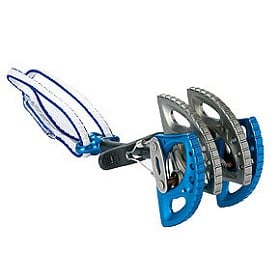
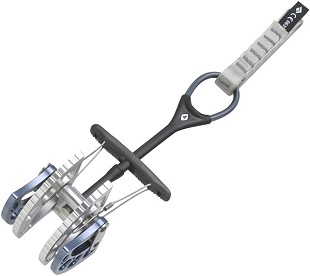


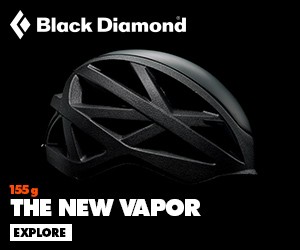
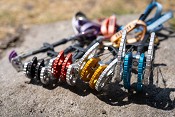
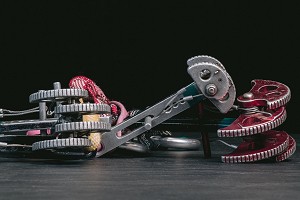

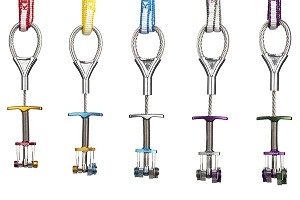
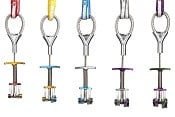
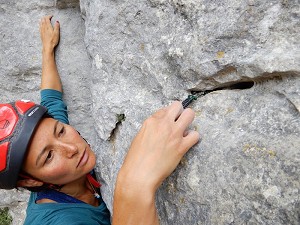
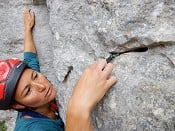
Comments